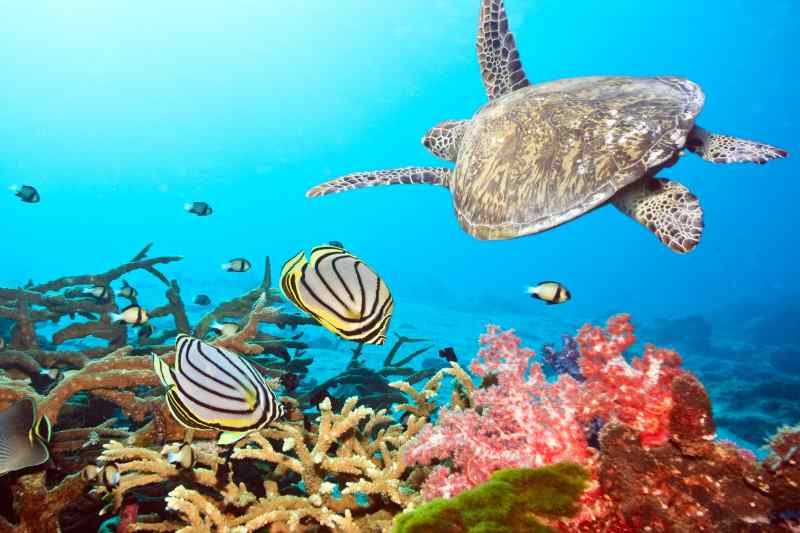By Jessica Russo
Headed to Australia's Great Barrier Reef? We are so jealous! Get ready for a whimsical world of marine magic.
If you're like us, you probably have some questions. What should I bring? What will I see? When should we go? Snorkel through this list of things we wish we knew before our first trip to the GBR.
What to Bring
- Sunblock
- Sunglasses
- Underwater camera
- Hat
- Swimwear & towel
- Motion sickness medication
- Change of clothes
When to Go
There is no bad time to visit the Great Barrier Reef. After all, it's one of the most picture-perfect sites in all the world! There are, however, better times to go than others. The very best time to visit is from June to November. The weather is mild, the visibility is good, and it is - for the most part - dry (fingers crossed). From December to March, on the other hand, Queensland experiences its wet rainy season. While the reef is always beautiful, it looks best under a blue sky.
Aside from weather, you'll want to keep wildlife in mind. Between the months of November and May, "Stinger Season" comes in with a buzz. During this period, jellyfish become especially prevalent in the area (yes, the stinging kind). If this is when you are traveling, do not worry! Divers and snorkelers regularly swim during these months. They just wear special wet suits called "stinger suits." Most tour companies have them readily available. Don't let stinger season scare you. As long as you follow the directions of your guide, you'll be good to go!
Why it's important to visit now
It's a devastating reality, but it's one we must acknowledge: the Great Barrier Reef has faced, and continues to face, severe environmental damage. Warmer sea temperature have caused the reef's coral to become heat stressed, which has killed much of the algae that covers it. This causes the coral to starve and turn white and bare - a process known as coral bleaching. While the Great Barrier Reef is still eye-wideningly beautiful, we, as travelers, must be aware of this issue. With this being said, it is so important that you do your best NOT to harm the reef. Do not break the coral, do not litter, do not take home any "natural" souvenirs. C'mon - don't be that guy.
While coral bleaching is proving to be catastrophic, it should teach us two things. First, it should teach us to be kinder to the planet. Second, it should teach us that, unfortunately, many natural wonders will not last forever. We must visit them while they're still enjoyable. Basically, there is no better time to visit the Great Barrier Reef than right now.
What marine life should I expect?
While the Great Barrier Reef is home to thousands of different marine life species, the most noteworthy are the "Great Eight." This group of animals is equivalent to the "Big Five" of the African bush (only way less dangerous). The Great Eight includes the Clownfish, Sharks, Manta Rays, Maori Wrasse, Potato Cods, Giant Clams, Turtles, and Whales.
If you're thinking "Sharks? Rays? Oh no!" rest assured that Manta Rays do not sting, and the majority of sharks are Reef Sharks - a species that is known for being timid and non-confrontational. In fact, Reef Sharks are more likely to swim away from you than toward you.











